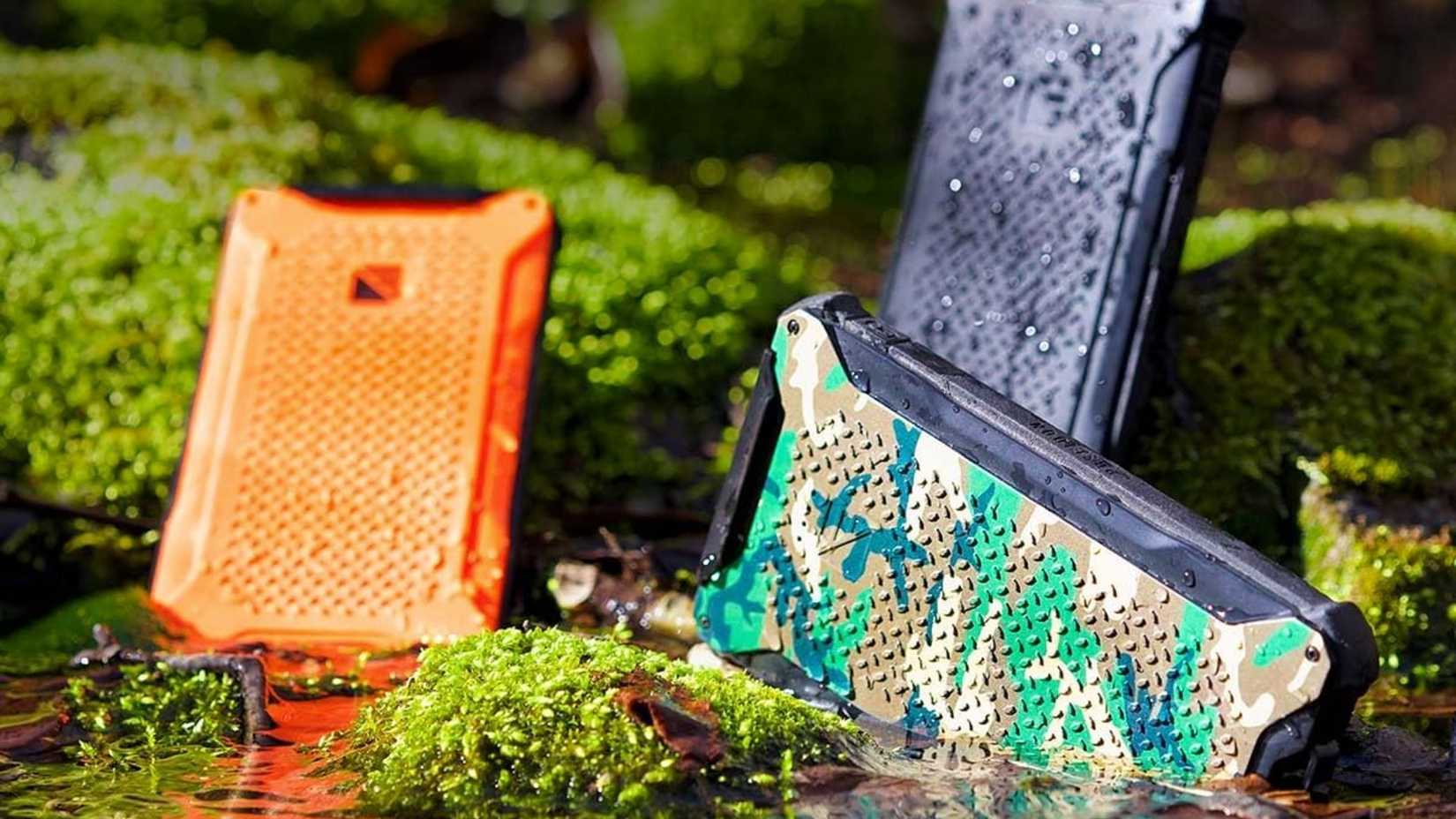People leave portable batteries in their cars for emergencies or to recharge their phones on the go. After all, a car seems like the perfect mobile storage unit, ready to shuttle our gadgets wherever we need them. However, this is a huge mistake that can cost you a lot of money.
The interior of a parked car can turn into a surprisingly extreme microclimate, far different from the outside world. The question isn’t just whether your battery will survive, but what happens to the intricate chemistry inside these batteries when left in these conditions they weren’t designed for. This seemingly harmless decision could actually do lasting damage that gets worse over time.
It Is Safe, but It Depends on Where You Live

If you’ve ever thought about leaving a portable battery in your car, especially a lithium-ion (Li-ion) power bank, you might want to reconsider. The truth is, whether it’s a good idea depends entirely on the temperature outside, which means it really comes down to where you live. Heat is the ultimate enemy of any battery, whether we’re talking about the one in your car’s engine or the one in your phone.
High temperatures speed up the chemical reactions inside, which degrade the battery and shorten its lifespan, forcing you to replace it sooner than you should have to. While lithium-ion batteries are remarkable for their energy density and long life, they’re super sensitive to temperature extremes, both hot and cold. When it gets too hot, those unwanted side reactions get even faster, causing the battery to degrade at an alarming rate.
The biggest danger here is how much hotter a parked car can get than the air outside. Thanks to the greenhouse effect, sunlight comes in through the windows and heats up everything inside. That heat gets trapped, and the interior temperature can skyrocket well above the outside temperature. On a day that’s only 75 degrees, the inside of your car can hit over 120 degrees in just 90 minutes. In a hot climate, a 110-degree day can turn your car into an oven, reaching temperatures of 160 to 176 degrees. All that localized heat turns your car into a thermal hazard zone for your electronics.
This extreme heat often goes way past the safe storage limits for most batteries. While many lithium-ion cells can operate up to 140 degrees, the ideal range for long-term health is much lower, usually between 50 and 104 degrees. So even if you’re going to be back in an hour, you’ve done a lot of irreparable damage to your battery already, and over time, it could explode.
Above 95 degrees, the solid-electrolyte interface layer on the anode starts to grow faster, which shortens the battery’s life because it loses cyclable lithium. For example, a fully charged lithium-ion battery stored at 140 degrees for a year can lose about 60% of its capacity just from sitting there.
I live in Las Vegas, and you can’t leave anything in your car for too long. I once left my phone in my car and came back to the screen stuck with areas permanently faded to the colors on my screen. I ended up replacing the phone entirely because it was like having a phone with a suntan.
These Batteries Are the Best for More Extreme Temperatures

Most people know that regular batteries, like the ones in your phone, really can’t handle extreme temperatures. Get them too hot or too cold, and they degrade fast and stop working. But what you might not know is that there are specialized batteries out there that are designed to handle these exact conditions, offering incredible reliability where a normal battery would completely fail. These batteries are generally built for industrial, military, and even aerospace applications where a huge temperature swing is just part of the job. However, you can buy them if you need to use them.
You can buy the Nitecore Summit 20000 Power Bank, the Goal Zero Venture 75 Portable Charger Power Bank, or the Poseidon Pro Indestructible Portable Charger if you want batteries that can sit through extreme heat or cold. These can be pricier, but you’re paying for quality and the ability to leave it in your car. Don’t underestimate them, because these were designed with a whole different level of engineering.
These are pretty pricey for portable batteries, but the reasons behind the price make sense. You’re basically paying for better batteries that can last the test of time and are made for emergencies. These are the batteries you want when the chips are down, and you need a good charge.
These batteries don’t just have a tougher casing. To handle the heat, these specialized batteries use special electrolytes that are less likely to break down, which helps with battery life and safety. On top of that, they’re often built with rugged enclosures to protect them from physical damage and come with advanced thermal management systems to make sure they can cool themselves down and perform their best.
When you look at non-rechargeable batteries, certain lithium chemistries are incredibly stable, even in high heat. They’re also very power-dense and have a really low self-discharge rate, which makes them perfect for things like medical tools that need to be sterilized in an autoclave or military systems that need to work no matter what.
What’s nice is that even the non-rechargeable batteries work well. For high-capacity rechargeable batteries, there are Nickel-Metal Hydride batteries with advanced materials that can handle temperatures up to 185 degrees. Basically, you can spend money on batteries that can last in your car, or you can just follow better practices for keeping them safe.
Best Storage Practices for Portable Batteries

To keep your portable batteries safe and make them last as long as possible, you have to store them the right way. The most important things to pay attention to are temperature, how charged they are, and the physical environment you’re keeping them in. For long-term storage, you’ll want a stable, cool, and dry place. The ideal spot is somewhere without big temperature swings, like a cool room. You should aim for temperatures between 59 and 86 degrees, but storing them below 77 degrees is even better for keeping their capacity and preventing self-discharge.
Storing batteries in places that are too hot or too cold is a surefire way to speed up aging. High heat is especially bad, and prolonged exposure to heat is one of the worst things you can do to your battery. If the temperature goes above 95 degrees, Li-ion batteries degrade much faster. So, make sure to keep your batteries out of direct sunlight, off of hot surfaces, and away from any heat sources.
A relative humidity of around 50% is also best, and definitely less than 70%. If it gets too humid, you risk corrosion and even short circuits from condensation. There’s also that myth that I’ve heard so many times, which I’d like to squash now. If you’re thinking about putting your batteries in a regular refrigerator for maximum cooling, don’t do it. Condensation can form when you take them out, making them potentially dangerous to use.
Beyond temperature, the state of charge is very important for keeping the battery healthy when it’s not in use. For Li-ion batteries, the sweet spot for storage is between 40% and 60% charge. This range puts the least amount of stress on the cells and keeps them from degrading quickly, especially if they are exposed to any heat. Storing your batteries at 100% charge is a bad idea because it can cause a sharp drop in capacity and speed up aging, particularly if it’s hot.
On the flip side, storing a battery that’s almost dead (below 30%) is also really damaging. If the charge gets too low, the battery could be permanently ruined and become unrecoverable. Some chargers even have a Storage Mode that automatically brings the battery to this optimal partial charge level, usually around 60% to 70%. This is great because it prevents both the capacity loss from a high charge and the permanent damage from a full discharge. If you’re putting a battery away, it’s a good idea to check on it every three to six months and recharge it if the percentage drops below 30%.
The thing you might not have thought about: the inside of a car is a wild place for a battery. On a sunny day, that car can turn into a literal oven, and that’s terrible news for the sensitive chemicals inside your power bank. That simple decision to leave a portable battery in your car can lead to a ton of problems you didn’t see coming, including shortening its lifespan or even creating a safety hazard.
As we become more and more dependent on these little powerhouses, it’s crucial to adapt and make sure you’re being as safe with them as possible. A little bit of knowledge here can go a long way in making sure your electronics last and, more importantly, stay safe.








